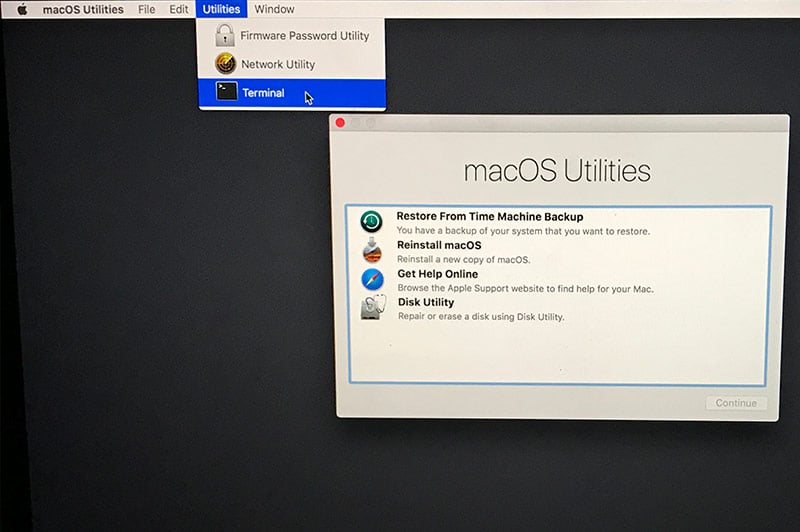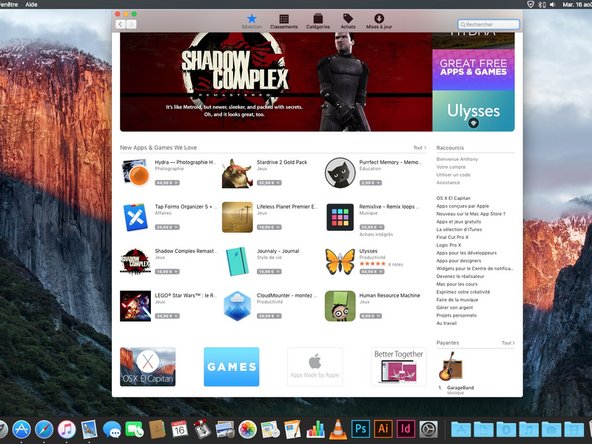(There's no video for Mac OS 9.2.2 'boot kit' for booting your G3/G4 from an USB stick yet. Please contribute to MR and add a video now!)
So, USB boot creator is undoubtedly a core function in Dr.boot, it's capable of creating bootable USB installation disk from Windows ISO, Linux ISO and Mac dmg file without complex computer skills and commands, just insert your USB drive and Dr.boot will recognize everything automatically.
Once BootCamp creates the partition and starts to load the Windows 7 or 8 Installer, power off the Mac by holding the power button for ten seconds. Boot the Mac while holding option key then eject the disk. Power off the Mac again. Insert your Windows 10 USB Installer and Power on the Mac. It will start up in Windows 10 Installer. I can't get my Mac to boot into DFU mode. This is the toughest part of the whole process as I mentioned above. Keep trying the steps I listed above. Sometimes it takes multiple attempts to get his to work. You can use System Information to see if the USB-C port lists your Mac in DFU Mode.
What is Mac OS 9.2.2 'boot kit' for booting your G3/G4 from an USB stick? Stop wasting plastic! You've been doing it wrong if you burn install CD's for your old Mac :PThis Mac OS 9.2.2 'boot kit' was made by @that-ben and makes the process of booting (and installing) Mac OS 9 on any G3 and most G4's from an USB stick a little bit easier, because not all the Mac OS 9 install CD images can be used to boot a Mac from an unlocked volume (such as from an USB stick or hard drive). This disk image does boot the computer into a fully useable desktop (albeit quite slow) and it's loaded with utilities and disk image mounting tools which will enable you to prepare and install Mac OS, everything without the need for a CD-ROM drive at all. Since the USB drive is unlocked, you can even surf the web using the pre-installed Classilla browser and go get more files, directly from the same computer you're about to install Mac OS on :P There is no Mac OS installer on this disk image. You still have to download a Mac OS install CD ISO of your choice (Mac OS 9.2.2 Universal 2002 edition is highly suggested unless you know and want to use your machine specific Mac OS install CD) in order to install it on your Mac. Follow these steps to clone this disk image onto an USB stick and follow the link at the bottom of that article to learn how to boot G3's and G4's from an USB stick using Open Firmware. Once the Mac is booted off of the USB stick, what I would do is: 1) Copy anything from the internal hard drive that's worth keeping onto an USB stick or external drive and then format the internal hard drive as HFS Extended using the Drive Setup found under the Applications folder on the USB stick. 2) Use another USB stick (formated as FAT32 if your main computer is a Windows PC or HFS Extended if it's under Mac OS X) or the network to copy your Mac OS install CD image onto that Mac's internal hard drive. 3) Lock that Mac OS install disk image (click on it to select it, then under the menu at the top: File > Get Info, then check the Locked attribute on the bottom/left corner). 4) Use the pre-loaded Toast 5 Titanium to mount the Mac OS install CD image (locked). 5) Launch the installer and enjoy your freshly installed Mac! No CD, no pollution. Pre-loaded software installed on the USB stick that you can use when booting off of it include:
Mac OS 9.2.2 Boot Kit.zip(164.02 MiB / 171.99 MB) Mac OS 9.2.2 Boot Kit / Toast (ISO) image / Zipped 1713 / 2019-02-12 / 3772eaedf5a1528c88d0a65252eb1333668b35c1 / / Architecture
Architecture: PPC Use this to boot any G3 and most G4's into a fully useable Mac OS 9.2.2 desktop from an USB stick, pre-loaded with all the tools you need to prepare and install Mac OS 9 on your PowerPC Mac. This could also be used to boot the QEMU emulator if you wanted. Emulating this? It should run fine under: SheepShaver |
The adapters and cables in this article work with these Mac computers and iPad Pro devices:
- Mac models that have Thunderbolt 3 ports. These ports support both Thunderbolt 3 and USB-C connections.
- Mac models that have a USB-C port. This port supports USB-C connections.
- iPad Pro models that have a USB-C port. This port supports USB-C connections.
To find the right cable or adapter for your Mac or iPad Pro, use the information below to identify the connector on the end of the cable coming from your display, hard drive, camera, hub, or other device. Check the end meant to plug into your Mac or iPad Pro.
Thunderbolt 3
If you're using an Apple Thunderbolt 3 cable or other Thunderbolt 3 cable with your display or other device, it will connect to your Mac without an adapter.
The Apple Pro Display XDR and LG UltraFine 5K Display use Thunderbolt 3.
USB-C
If you're using a mophie USB-C Cable with USB-C Connector or other USB-C cable with your device, it will connect to your Mac or iPad Pro without an adapter.
The LG UltraFine 4K Display uses USB-C.
USB-A


If you're using a USB-A cable with your device, use the Apple USB-C to USB Adapter, the Apple USB-C Digital AV Multiport Adapter, the Apple USB-C VGA Multiport Adapter, or another USB-C to USB-A adapter to connect your device to your Mac or iPad Pro.
To charge an iPhone, iPad, or iPod touch from a Thunderbolt 3 or USB-C port without one of these adapters, you can use the Apple USB-C to Lightning Cable instead.
Ethernet
If you're using an Ethernet cable with your device, use a third-party USB-C to Ethernet adapter, such as the Belkin USB-C to Gigabit Ethernet Adapter.
Thunderbolt or Thunderbolt 2
If you're using a Thunderbolt or Thunderbolt 2 cable with a Thunderbolt display or other device, use the Apple Thunderbolt 3 to Thunderbolt 2 Adapter.
This is the correct adapter for the Apple Thunderbolt Display.
Thunderbolt and Thunderbolt 2 are not the same as Mini DisplayPort . They have the same shape, but use different symbols on the cable and port.
Mini DisplayPort
If you're using a Mini DisplayPort cable with a Mini DisplayPort display, use a third-party USB-C to Mini DisplayPort adapter. Check with its manufacturer for compatibility with your Mac and display model.
This is the correct solution for the Apple LED Cinema Display.

Mini DisplayPort is not the same as Thunderbolt or Thunderbolt 2 . They have the same shape, but use different symbols on the cable and port.
Macbook Pro Boot From Usb Drive
DisplayPort
If you're using a DisplayPort cable with your display, use a third-party USB-C to DisplayPort adapter or cable, such as the Moshi USB-C to DisplayPort Cable.

HDMI
If you're using an HDMI cable with your display, use the Apple USB-C Digital AV Multiport Adapter or a third-party USB-C to HDMI adapter or cable.
VGA
Boot From Usb Mac Windows Keyboard
If you're using a VGA cable with your display, use the Apple USB-C VGA Multiport Adapter. Or use a third-party USB-C to VGA adapter, such as the Belkin USB-C to VGA Adapter.
DVI
If you're using a DVI cable with your display, use a third-party USB-C to DVI adapter or cable. Check with its manufacturer for compatibility with your Mac and display model.
Learn more

If you're using a USB-A cable with your device, use the Apple USB-C to USB Adapter, the Apple USB-C Digital AV Multiport Adapter, the Apple USB-C VGA Multiport Adapter, or another USB-C to USB-A adapter to connect your device to your Mac or iPad Pro.
To charge an iPhone, iPad, or iPod touch from a Thunderbolt 3 or USB-C port without one of these adapters, you can use the Apple USB-C to Lightning Cable instead.
Ethernet
If you're using an Ethernet cable with your device, use a third-party USB-C to Ethernet adapter, such as the Belkin USB-C to Gigabit Ethernet Adapter.
Thunderbolt or Thunderbolt 2
If you're using a Thunderbolt or Thunderbolt 2 cable with a Thunderbolt display or other device, use the Apple Thunderbolt 3 to Thunderbolt 2 Adapter.
This is the correct adapter for the Apple Thunderbolt Display.
Thunderbolt and Thunderbolt 2 are not the same as Mini DisplayPort . They have the same shape, but use different symbols on the cable and port.
Mini DisplayPort
If you're using a Mini DisplayPort cable with a Mini DisplayPort display, use a third-party USB-C to Mini DisplayPort adapter. Check with its manufacturer for compatibility with your Mac and display model.
This is the correct solution for the Apple LED Cinema Display.
Mini DisplayPort is not the same as Thunderbolt or Thunderbolt 2 . They have the same shape, but use different symbols on the cable and port.
Macbook Pro Boot From Usb Drive
DisplayPort
If you're using a DisplayPort cable with your display, use a third-party USB-C to DisplayPort adapter or cable, such as the Moshi USB-C to DisplayPort Cable.
HDMI
If you're using an HDMI cable with your display, use the Apple USB-C Digital AV Multiport Adapter or a third-party USB-C to HDMI adapter or cable.
VGA
Boot From Usb Mac Windows Keyboard
If you're using a VGA cable with your display, use the Apple USB-C VGA Multiport Adapter. Or use a third-party USB-C to VGA adapter, such as the Belkin USB-C to VGA Adapter.
DVI
If you're using a DVI cable with your display, use a third-party USB-C to DVI adapter or cable. Check with its manufacturer for compatibility with your Mac and display model.
Learn more
Boot From Usb Macbook Pro 2018
- You can use your USB-C Power Adapter and charge cable with any Thunderbolt 3 or USB-C port on your Mac or iPad Pro.
- If you have an Apple TV connected to your TV, projector, or other display, you can use AirPlay to wirelessly stream video to that display, or extend the desktop of your primary display.
- Learn about using external monitors with your Mac.
- Learn more about using the USB-C port on your iPad Pro.
